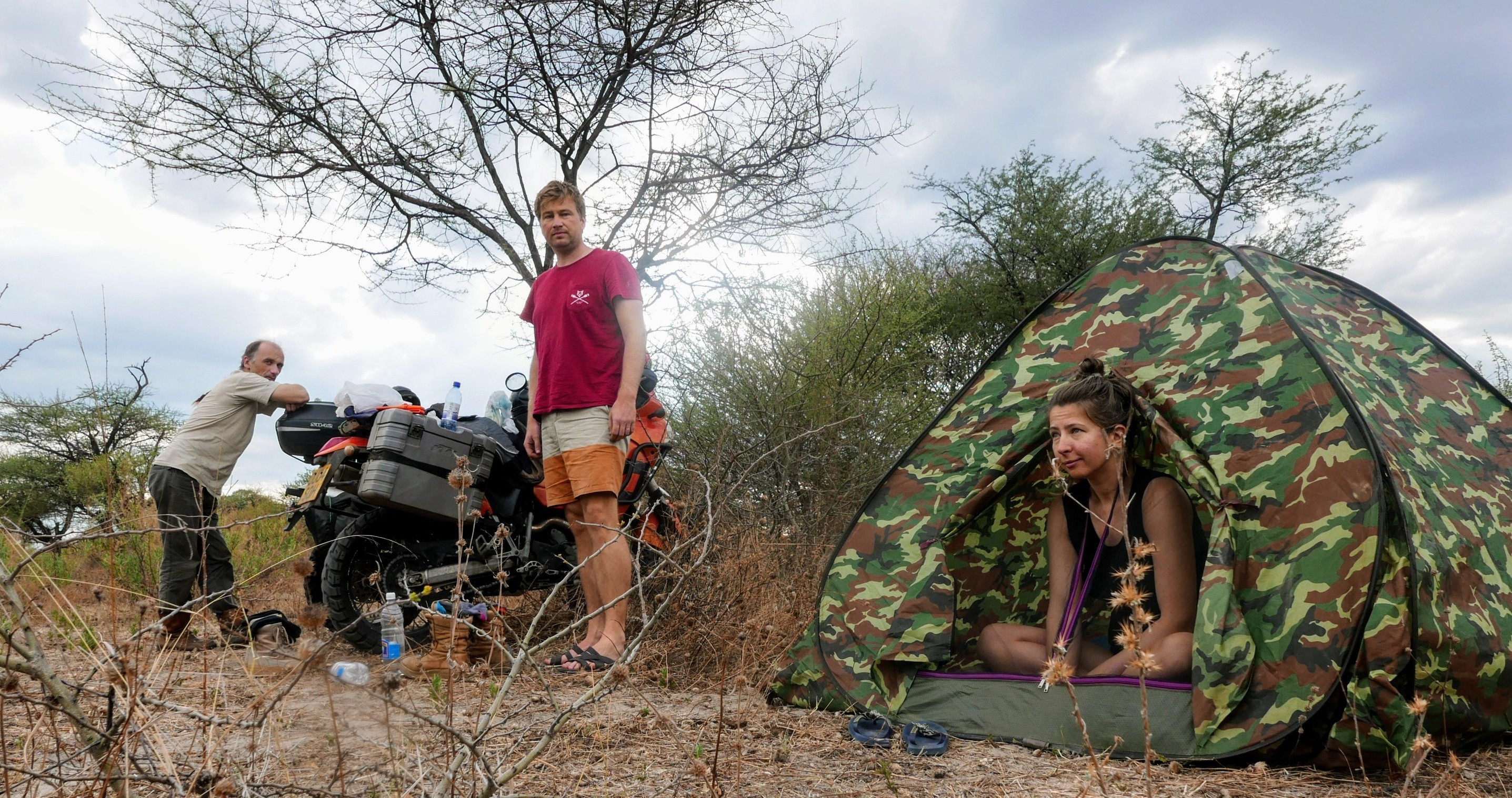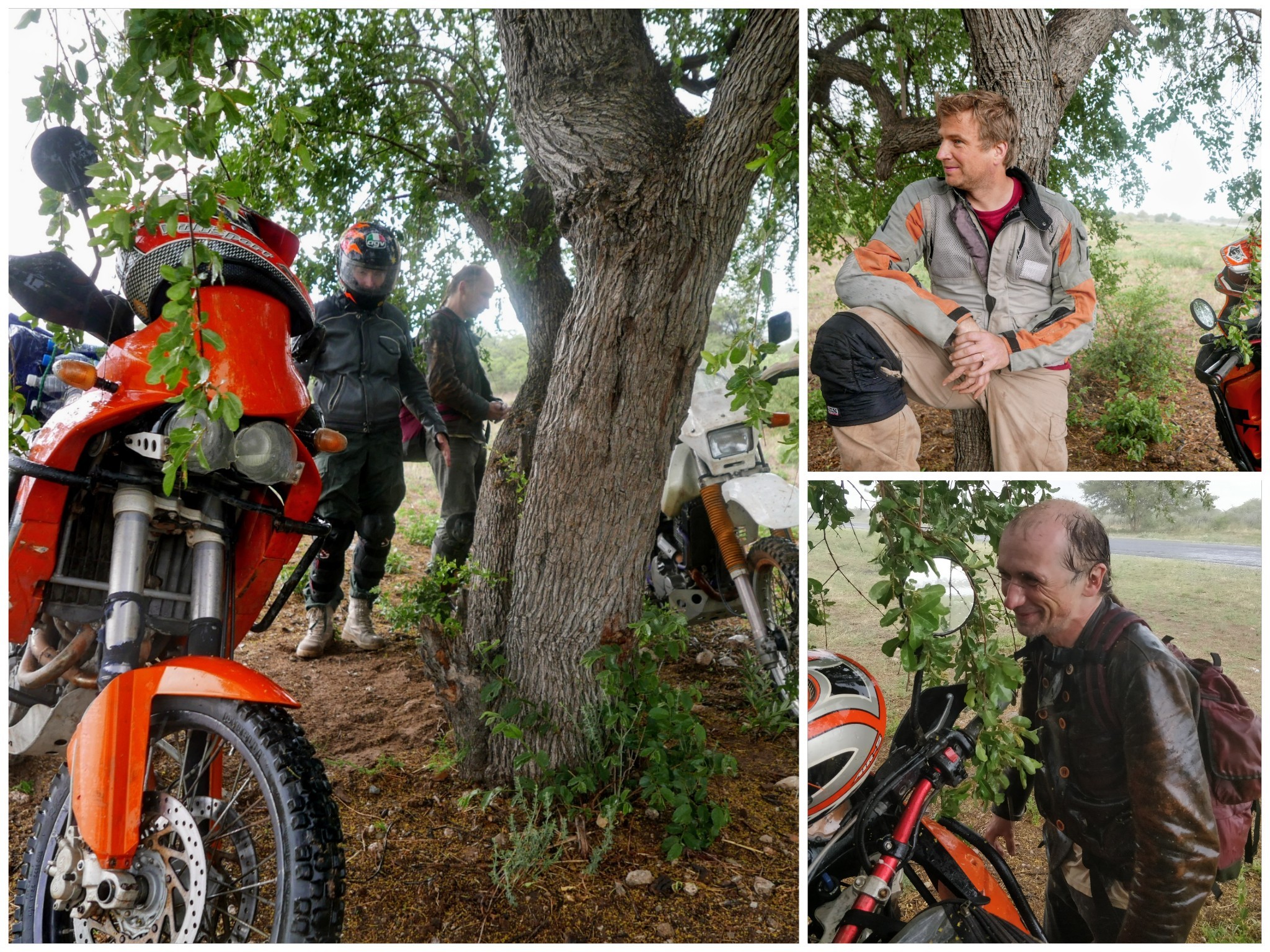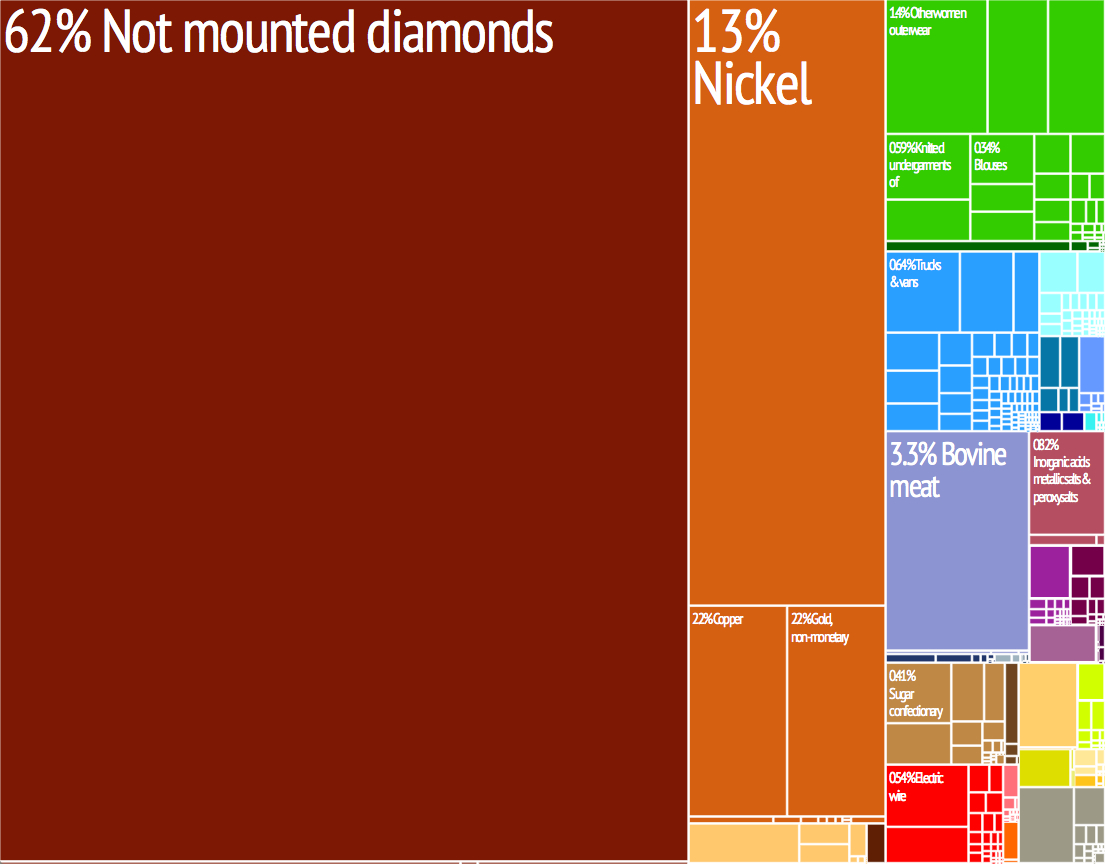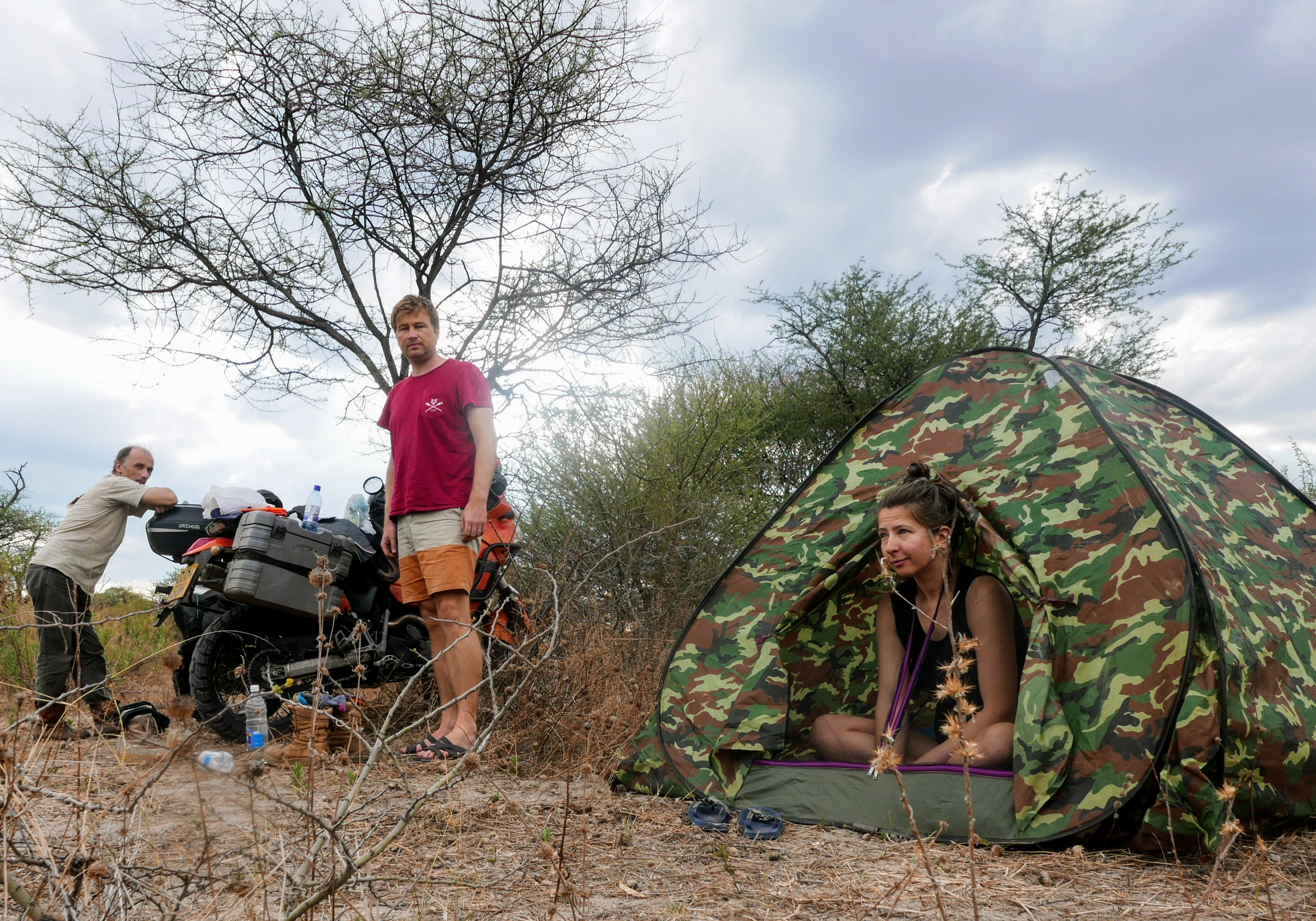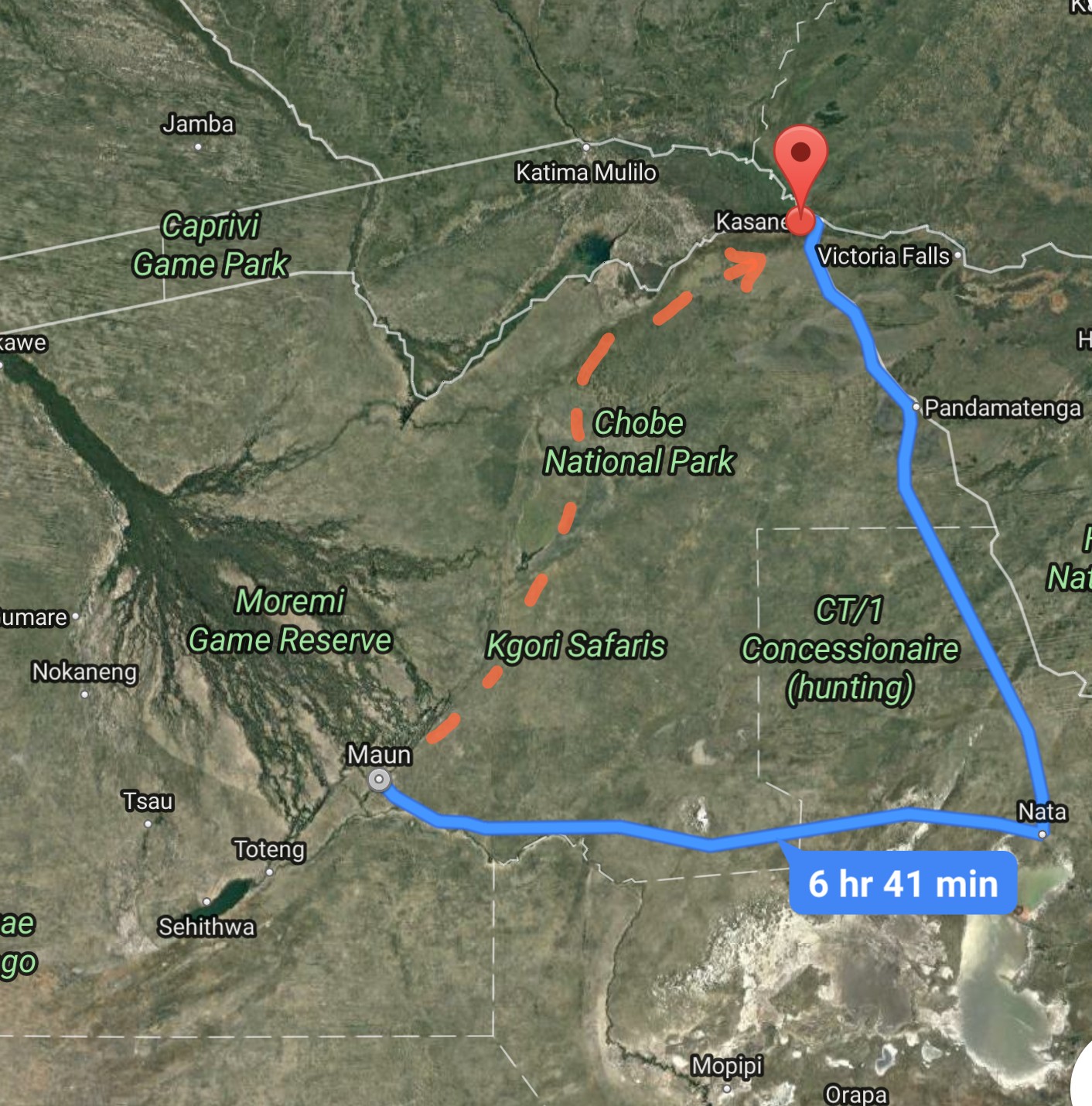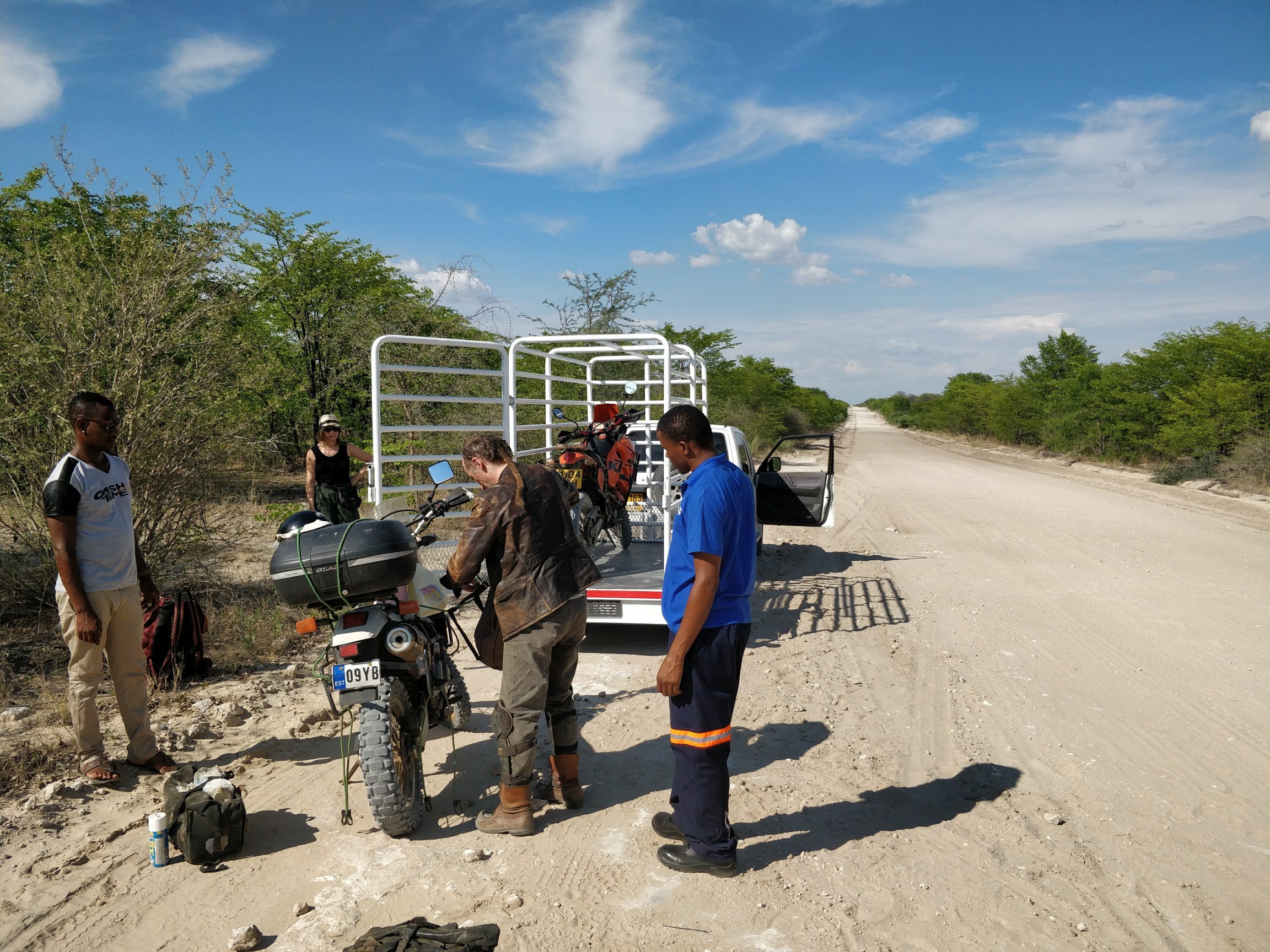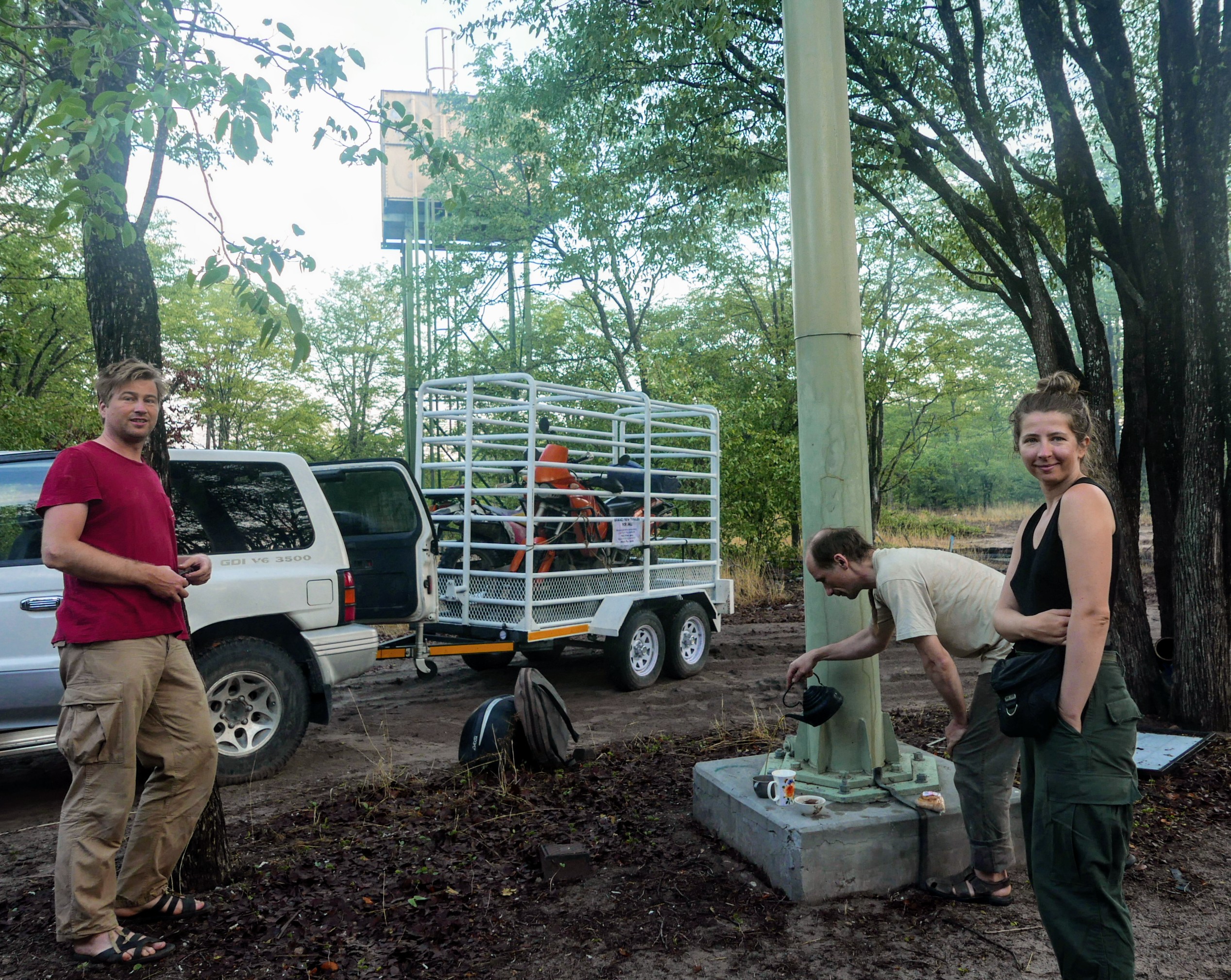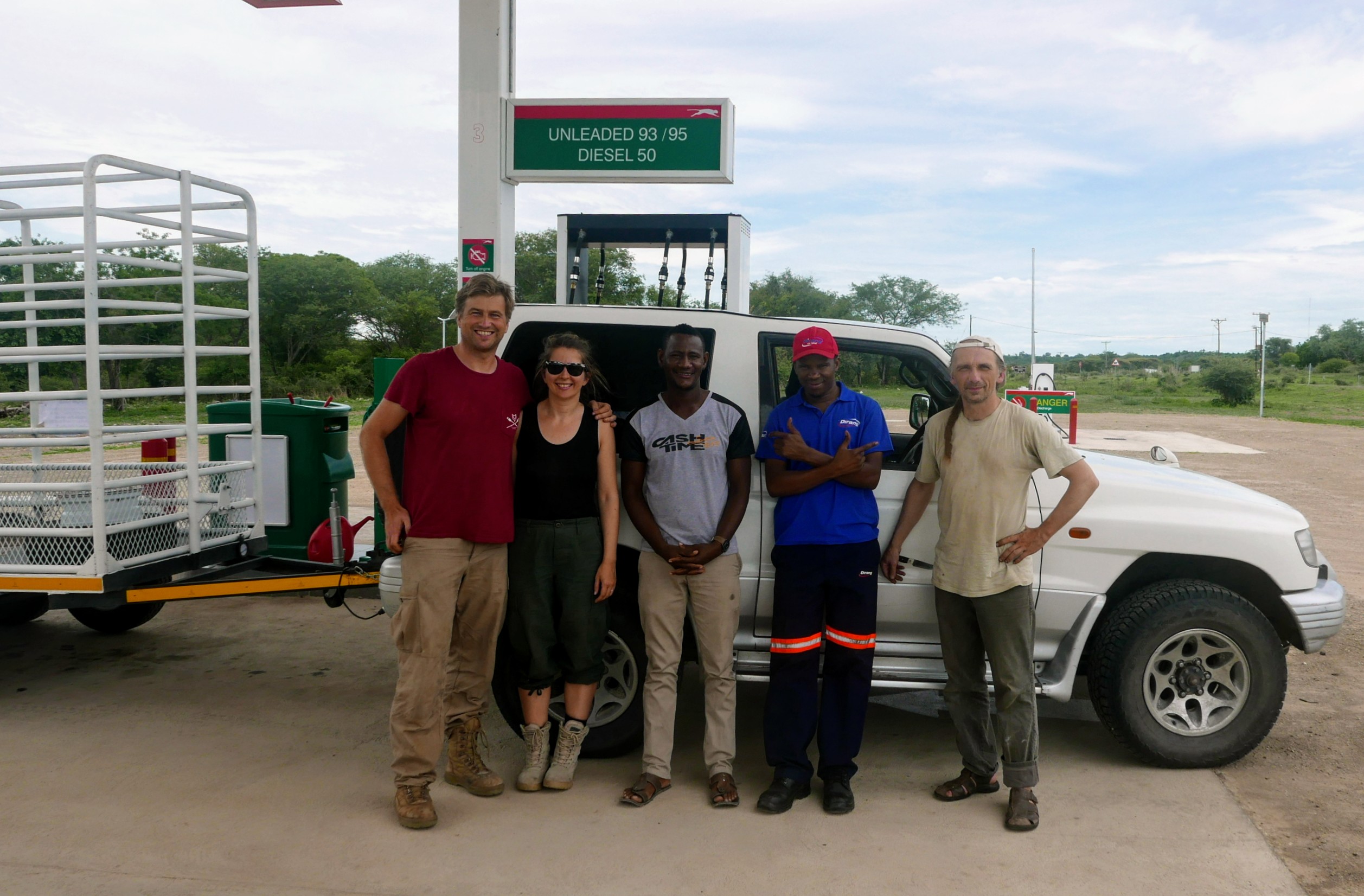There are 3 rules in motorcycle travel: never ride in the dark, never ride in the rain and never take the short route. We learned something about two of those rules in Botswana. Bechuanaland is a cool place. Its currency is called pula, which means rain in the local setswana language. The whole country is semi-desert with Kalahari in the middle. Everyone, who is not involved in mining diamonds is growing cattle and for them rain is money. We saw ourselves how the dry stone desert turned into a grassland in Namibia only a few days after the rains had started.
While riding in rain is completely against convention in every other climate – there is no reason why to avoid it in the desert. You get soaked wet, but it takes about 5 minutes to dry up in the blow dryer of a desert highway afterwards. First time we seeked cover under a bush, but soon realised it was unnecessary.
The third rule is about avoiding the short route. It is all about hitting or missing the adventures, which always happen on the long route. After 600km of good straight tarmac and no more than 5 tiny villages on the way we reached the town of Maun in north-western Botswana. This town lies on the edge of the famous Okawanga delta – a river delta, which flows into the desert and then dries up. There aren’t many people in Botswana to begin with, but the Motswanas who live there clearly don’t drink or eat out. There were virtually no bars and no eateries in the villages and smaller townships. Instead the high street was lined with Toyota workshops, cattle related equipment and some other serious stuff. But nothing related to eating or drinking. The same kind of difference we saw when crossing from jolly Congo to proletariat Angola. It was also very rare to meet a local white on the streets. Very different from Namibia in this sense.
Nearly 80% of the country’s exports are taken from the ground and it is only very impressive that the country has maintained the rule of law and low corruption. Botswana and Namibia do have one of the world’s highest gini index values, meaning the wealth is unequally distributed in the population. Finland has the lowest gini score.
This time we wanted to avoid the long route to Kasane – where all of Angola, Namibia, Botswana, Zambia, Zimbabwe meet. It would be a long 700km tar road via Nata on the only road marked on maps. And then there is a short way – less than 400km of tracks through the Chobe national park. Sadly, they don’t let motorbikes into the park and given the state of tracks it is only 4×4 who can get through. Botswana is famous for its lack of corruption, so much so that my Namibian friend Dirk warned: “You’ll be locked up there if you even attempt to offer a special fee.” That’s great to hear, but also means we had to follow the rules. But the rules said nothing about motorcycles going into the park on a trailer. We just needed to find a 4×4 and a trailer to take Suusi and Kotilda through the park and check out some animals en route.
We put the word out in Maun that there is 2000 pula (150 eur) looking for an owner of a truck and a trailer on a one way trip through Chobe. Two hours later we had 2 motswanas in a 2-door Mitsubishi Pajero and a cattle trailer ready to load the bikes. There was a bit of negotiation about who pays for the fuel and we agreed them to pay the fuel and me to take the park fees. The route to the first gate was meant to be 30km of tar, then 70km of gravel and 20km of sand track. We said we’re going to take the tar road on the bikes and load when we get to gravel as we were two up with Kriss and my clutch was giving in. In the village at the end of the tar road we took shade from the burning afternoon heat and treated ourselves to some Fanta. Soon the Pajero arrived behind us. I gave them the international sign of “thumbs up, all is cool“. They read it as: “yeah, carry on – we’ll take our time here and then follow you on our bikes.” The next moment the villagers saw me running after a Pajero and the trailer on the gravel road with no luck. Africans rarely look in the mirror. Instead of us waiting until our 4×4 friends realise we’re not following them and turn back, we packed up quickly and decided to chase them on this gravel road. “Gravel” in african languages means a rutty ribbed road, like riding up and down the stairs, covered with pits and sections of deep soft sand. On a bike neither of these are an issue, as long as you’re going really fast, preferably 90kph or more and have good tyres to keep you straight. The speed was a no-brainer here, because the faster we went the sooner we would catch up with the Pajero. It was a bit of an issue for Kriss, who hadn’t expected us thunder through clouds of dirt spun up by speeding 4x4s which we were passing with a fully open throttle, two up fully loaded on an african gravel road.
10km later we catch up with the Pajero, load the bikes and continue on the backseat. The owner of the 4×4, a young Motswanan wearing two diamond earrings spoke amazingly clean English. Expect he didn’t speak much at all. The 2-door jeep was definitely a local chick magnet and as we found out later, an amazing workhorse pulling the loaded trailer through the park tracks. As we reached the sandy tracks leading to the gate a few hours later I just couldn’t stop thinking – did they really agree to take us there for 150 eur? As we reached the gates the lady in charge of that gate had just closed down at 7pm and wasn’t going to let anyone else in or out of the park. You’re not allowed to drive after dark and it is non-negotiable. The dudes were hoping to drop us off on the other side and drive back through the night. We didn’t mind at all and were happy to camp at the gates to continue in the morning. Another gatekeeper invited us to his house in the living compound near the gate. The fire got started, tea got made, some rice cooked and stories told.
With the sunrise we get into the park 6am and start chugging along the sandy tracks, elephants roaming on both side of the track, plenty of springbok, gnus and a few rhinos grazing.
Our agreement was that they drop us off at the park gate on the other side, where we’re allowed to ride the bikes again. Back of my mind I was looking at the deep sand track that the 4×4 was inching through and thinking how it will be going on Kotilda with Kriss and without knobbly tyres on the back. I was preparing arguments I was planning to have at the gate for them to keep going for another 2 hours (50km) until we get to tar road.
That wasn’t necessary. After 10 hours of driving since Maun we reach the gate and keep going – the diesel is almost finished and our friends can’t turn back. They need to go until they find a place to get at least 60l of fuel for the way back. That works very nicely for us. Until the car goes urgh-urgh and then stops on the roadside. Luckily we’re already on tarmac. We unload Suusi and send Juka with a couple of plastic bottles to scout for diesel.
In the early afternoon our caravan makes it to the first pump on the other side. I pay the driver and feel really really terrible about how poor a deal he was getting. Diesel isn’t cheap there. Diesel one way must have cost him 60 eur out of the 150 we paid them for the two day trek. I get out my all-powerful stealth TransferWise debt card and pay for their tank of diesel for their way back. We tie up everything that had rattled off from the bikes on the trailer, fix up my clutch and head north.
